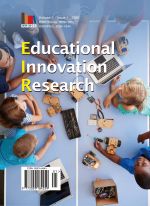Integrating Human-AI Collaboration in Education: A New Approach to Curriculum Design
DOI:
https://doi.org/10.18063/eir.v3i1.614Keywords:
Artificial intelligence, Educational innovation, Curriculum design, Human-AI collaboration, Personalized learningAbstract
This paper examines the role of digital technologies in enhancing personalized and collaborative learning in education. Drawing on theories of constructivism, personalized learning, and collaborative learning, it explores how adaptive platforms improve student outcomes. Case studies show that these technologies, along with collaborative tools in online courses, can foster greater engagement and deeper learning. However, their effectiveness depends on their integration with traditional teaching practices, where teachers remain central in guiding learning and providing emotional support. The paper concludes that while digital tools offer valuable benefits, their success relies on addressing challenges such as equitable access and teacher training.
References
Baker RS, 2016, The Role of Adaptive Learning Systems in K-12 Education. International Journal of Artificial Intelligence in Education, 26(1): 1–18.
Pashler H, McDaniel M, Rohrer D, et al., 2008, Learning Styles: Concepts and Evidence. Psychological Science in the Public Interest, 9(3): 105–119.
Liu H, 2020, Exploring AI’s Impact on the Role of Teachers in Education: A Case Study. Journal of Educational Technology Systems, 48(4): 445–460.
Guskey TR, 2002, Professional Development and Teacher Change. Teachers and Teaching: Theory and Practice, 8(3): 381–391.
Vygotsky LS, 1978, Mind in Society: The Development of Higher Psychological Processes, Harvard University Press, Cambridge.
Piaget J, 1973, To Understand is to Invent: The Future of Education, Grossman Publishers, New York.
Brusilovsky P, Millan E, 2007, User Models for Adaptive Hypermedia and Adaptive Educational Systems. User Modeling and User-Adapted Interaction, 18(1): 1–39.
Tomlinson CA, 2001, How to Differentiate Instruction in Mixed-Ability Classrooms, ASCD, Alexandria.
Pane JF, Steiner ED, Baird MD, et al., 2015, Effectiveness of Personalized Learning. Educational Evaluation and Policy Analysis, 37(3): 387–410.
Norman DA, 1988, The Design of Everyday Things, Basic Books, New York.
Johnson DW, Johnson RT, Smith KA, 1998, Active Learning: Cooperation in the College Classroom. The Annual Report of Educational Psychology in Japan, 47.
Dillenbourg P, 1999, Collaborative Learning: Cognitive and Computational Approaches. Computers & Education, 1(1).
Chen X, Wang Y, Zhang L, 2020, Human-AI Collaboration in Curriculum Design: A Framework for Future Learning Environments. Educational Technology Research and Development, 68(4): 1–18.
Holmes W, Bialik M, Fadel C, 2019, Artificial Intelligence in Education: Promises and Implications for Teaching and Learning, Center for Curriculum Redesign, Boston.
Koller D, 2013, The Future of Online Learning: Challenges and Opportunities. International Journal of Educational Technology in Higher Education, 10(2): 27–40.
Von Ahn L, Dabbish LA, 2004, Labeling Images with a Computer Game, Proceedings of the SIGCHI Conference on Human Factors in Computing Systems, Vienna, Austria, 319–326.

